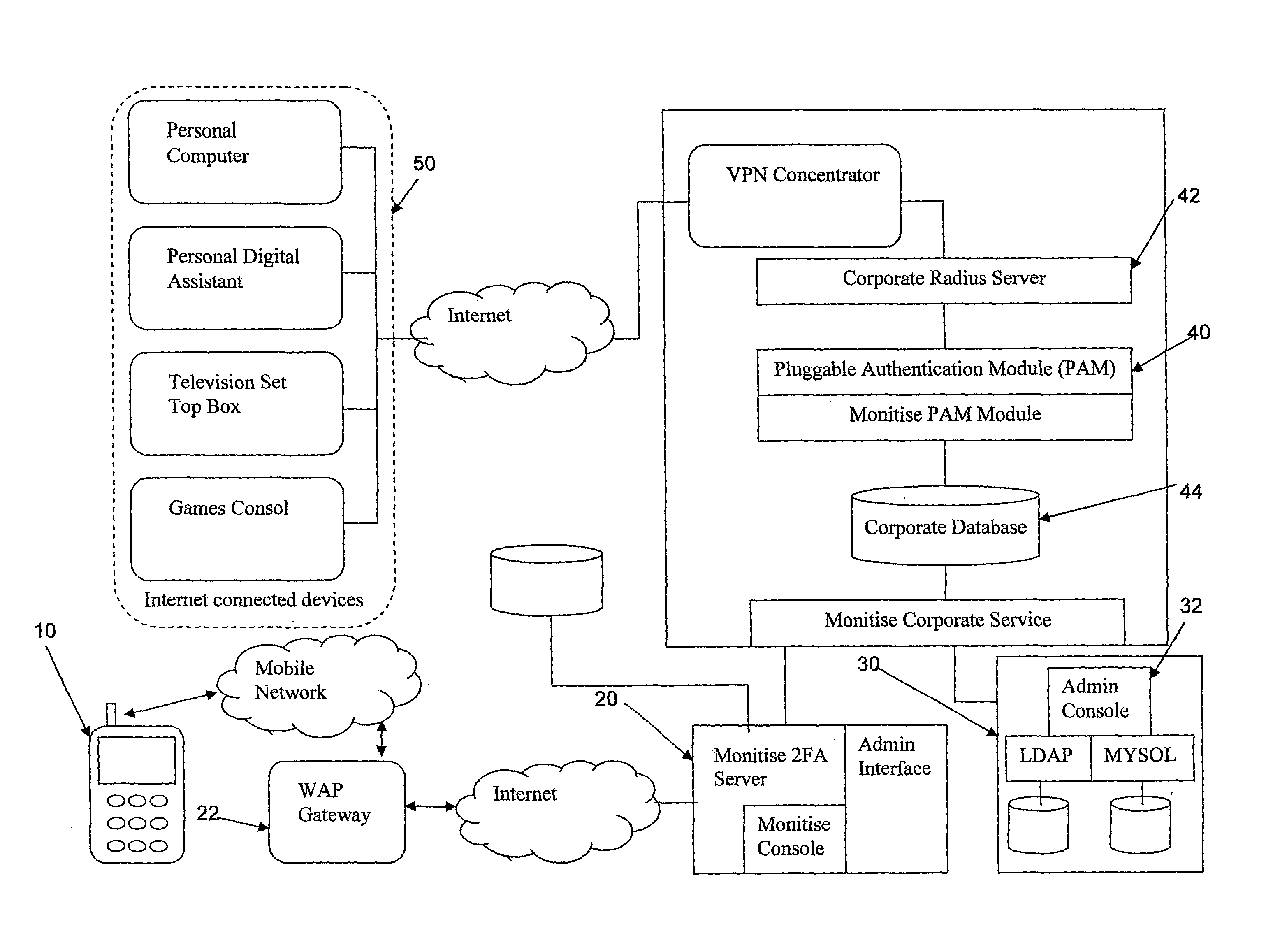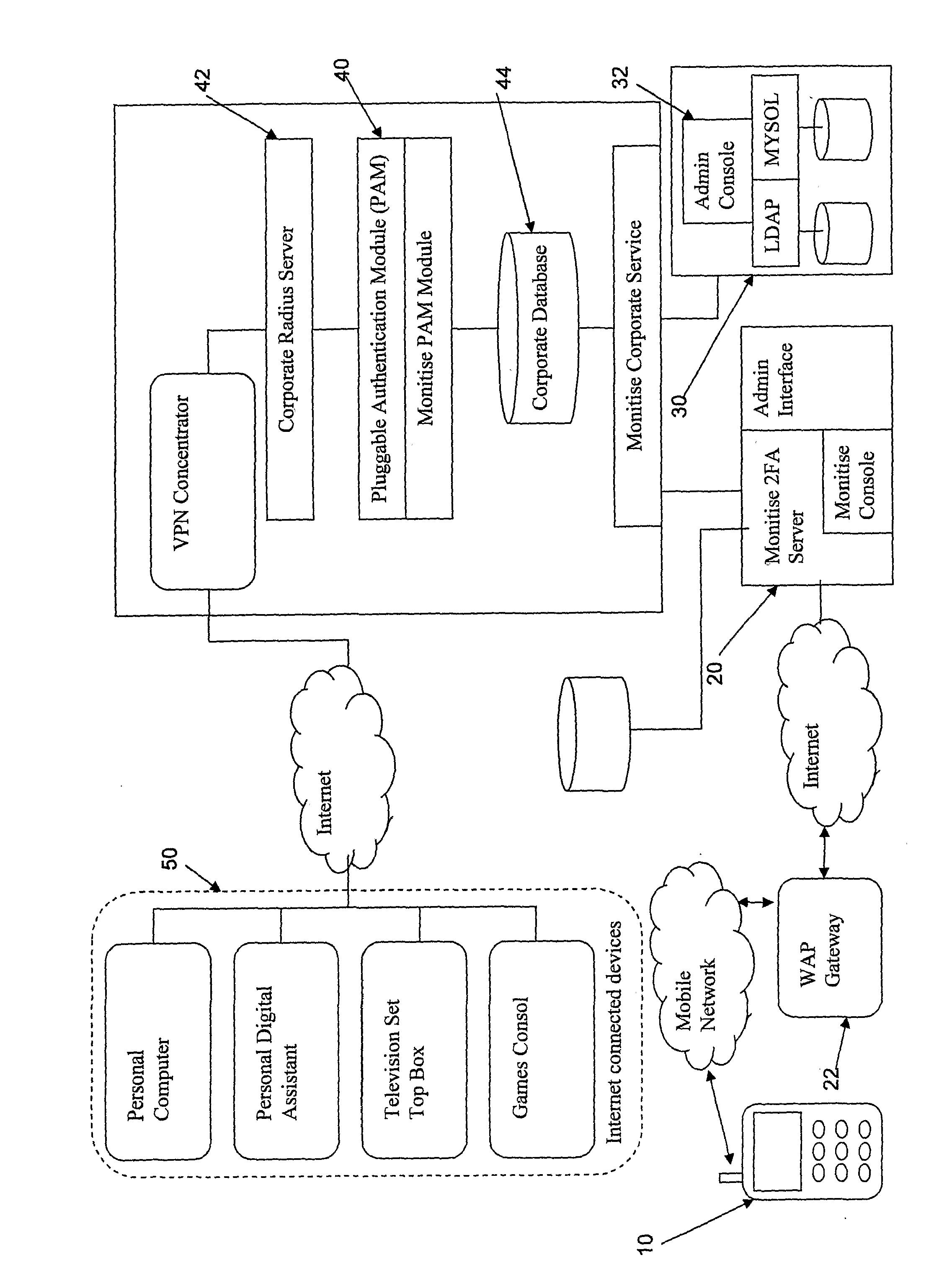Electronic System for Securing Electronic Services
a technology of electronic services and electronic systems, applied in the field of electronic systems for securing electronic services, can solve the problems of increasing the difficulty of securing electronic services, affecting the overall security of access control systems, and affecting the efficiency of electronic channels to achieve the efficiency gains provided by new channels, so as to increase the number and sophistication of internet services, secure and commercially efficient
- Summary
- Abstract
- Description
- Claims
- Application Information
AI Technical Summary
Benefits of technology
Problems solved by technology
Method used
Image
Examples
Embodiment Construction
[0047]The invention will be described with respect to using cellular mobile phones as a token in a multiple token access control mechanism but it is not intended that the invention in its broadest sense is restricted to such devices.
[0048]The invention is comprised of a number of components that together deliver a secure two-factor authentication mechanism for corporations and merchants. The service provides both an off-network and on-network mechanism for generating a one-time, time-limited password that is used in conjunction with other authentication components by an employee or customer to legitimately access a corporate network or secures Internet application or service from an Internet connected device.
[0049]Instead of requiring a simple username and password or username PIN and token to gain secure access the user has a cellular phone based application that is used to generate a one-time password. The one time password is configurable but can for example consist of a six digi...
PUM
 Login to View More
Login to View More Abstract
Description
Claims
Application Information
 Login to View More
Login to View More - R&D
- Intellectual Property
- Life Sciences
- Materials
- Tech Scout
- Unparalleled Data Quality
- Higher Quality Content
- 60% Fewer Hallucinations
Browse by: Latest US Patents, China's latest patents, Technical Efficacy Thesaurus, Application Domain, Technology Topic, Popular Technical Reports.
© 2025 PatSnap. All rights reserved.Legal|Privacy policy|Modern Slavery Act Transparency Statement|Sitemap|About US| Contact US: help@patsnap.com


